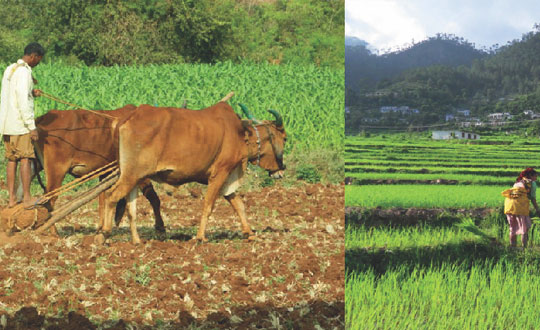I belong to the fertile lands of Punjab. I still remember the green khets and khaliyans from my childhood days. Back then not one kisan would be sick or commit suicide. Even in testing times (floods, draughts or insect attacks), they remained spirited for the entire community would come forward to help.
Every kisan had pashu dhan (wealth of cattle) to replenish his soil with manure, to nourish his family with milk. These kisans saw not one, but multiple crops in a year. They wouldn’t mess with earth by forcing chemicals into it. Instead they would befriend the microbes and insects, which help maintain soil quality. The oxen helped them turn soil upside down. They would store cow dung, dried leaves and rotten fruits into a pit and let it decompose through years, this gave them ghora, a manure par excellence, the secret to amazing fertility of the then Punjabi soils. Ghora was used with neem khali for added benefits. The indigenous knowledge equipped them with practice of crop rotation to improve soil fertility. The kisan was in harmony with nature, with spiders, butterflies, annelids like earth worms, birds like kath phodwas, mainas and gauraiyas.
It was the dharma of the kisan to produce bountiful crops and also share it in abundance.
Cut to present times. Today’s farmer relies on hybrid seeds, insecticides, pesticides and chemical fertilisers and is steeped in loans, a trend that has emerged in the last 50-60 years. Given the state of farmers and farmlands, switching (back) to organic and zero-budget farming is a necessity.
Our kisan needs to deploy conscientious kheti; khet is Dev Bhumi not a factory. The migration of traditional kheti from childhood memory to present reality is the need of the hour.
Author: Anubha Kanwar





